Welcome to our week seven Hale Library update!
Now that most floors of the building are emptied and we’re starting to work with a blank slate, truly dramatic changes are less visible. Nonetheless, surprises crop up on a regular basis—some less welcome than others.
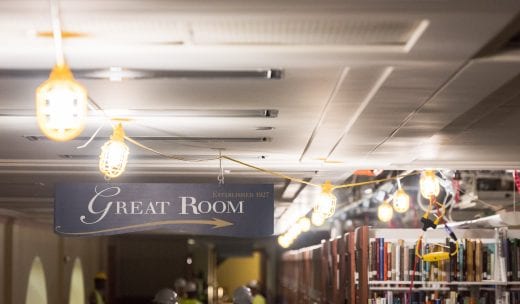
Special Collections
The vast majority of the materials from the Richard L. D. and Marjorie J. Morse Department of Special Collections are located on Stack G and Stack H. For weeks, our plan was to clean those materials on the premises.
“We really hoped we could set up cleaning stations in the building and go through the process of vacuuming them and wiping them down to remove soot right here on site,” Roberta Johnson, director of administrative and IT services, said.
Unfortunately, Stack G is getting hotter: A water line that provides cool water to the chilling system was damaged in the fire. It needs to be fixed, but that water line is an area of the Great Room that is currently inaccessible.
This week, we received the news that temperatures in Stack H are rising, too.
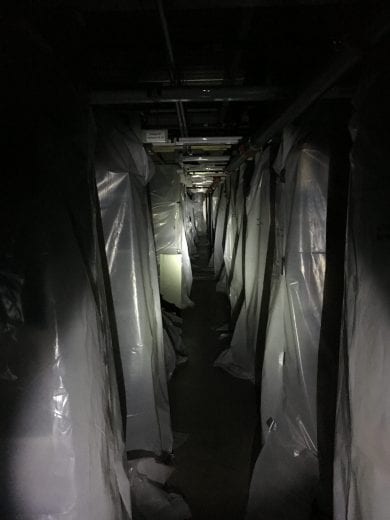
“All of the building except the data center in the basement and a few elevators are still powered by generators,” she added. “The cooling system for Stack H isn’t getting reliable power, and until good commercial power is available, and the unit’s electrical issues are resolved, these problems will continue.”
So the materials in both Stack H and Stack G will be packed out soon and transferred to Executive Court, the storage and cleaning facility near the airport.
“In some places, the building conditions are getting worse instead of better,” Johnson said. “We just can’t risk leaving valuable materials in non-climate controlled space.”
The Great Room
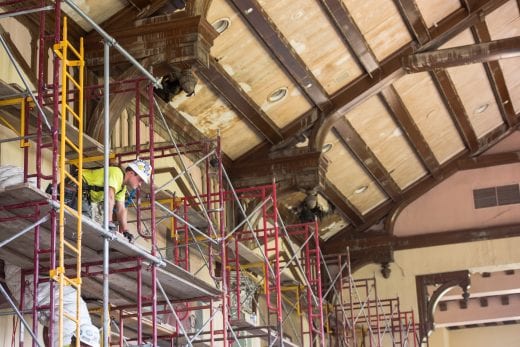
Additional scaffolding has been constructed in the Great Room. Once complete, crews will build a floor across the top; from that floor they will be able to reach the ceiling and start the restoration process.
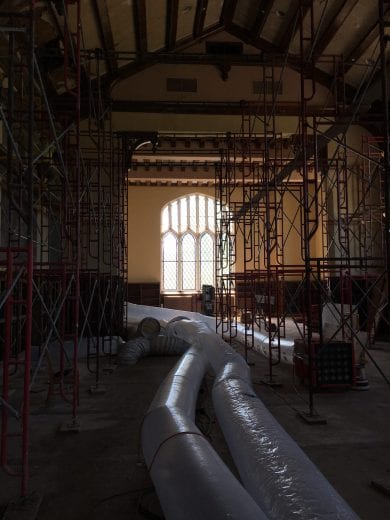
Julia Manglitz, a professional art restorer, is on-site to oversee efforts to preserve the Great Room murals, which were painted by David Hicks Overmyer in 1934.
“Her goal is to dry the plaster out very slowly in order to cause the least possible damage to the murals,” Haddock said.
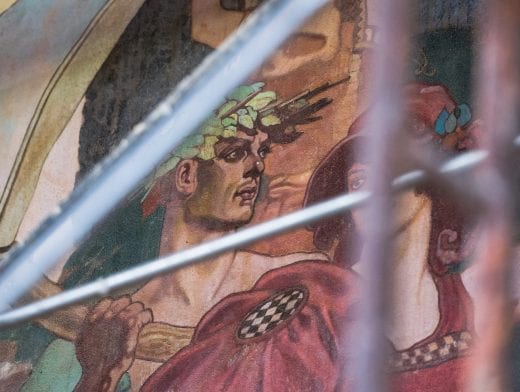
He also explained that she is using a large black light to examine and photograph the murals because the UV light can make damage on the painting’s surface readily visible.
The “We are the Dream” mural is in the Academic Learning Center, which is on the opposite side of the wall from the Great Room Mural. Manglitz hopes to remove the “We are the Dream” canvas from the wall as the plaster dries, but that painting is in less-than-ideal condition and the outcome is uncertain.
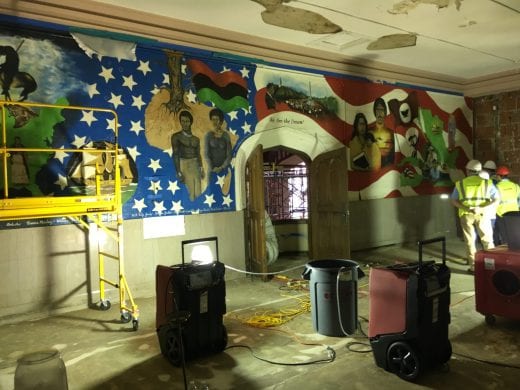
In a related effort, there is a full painting crew in the Academic Learning Center, but they are actually “unpainting,” or removing the paint from the walls, thereby erasing a barrier that is preventing the plaster from drying out.
The next step will be to remove the ceiling in the Academic Learning Center, another part of the effort to eliminate moisture from the environment.
One building challenge and one bit of trivia
Meanwhile, up on the roof, there are three very large, non-functioning air conditioning units that will have to come off. (Well, two very large ones, and one very, very large one.)
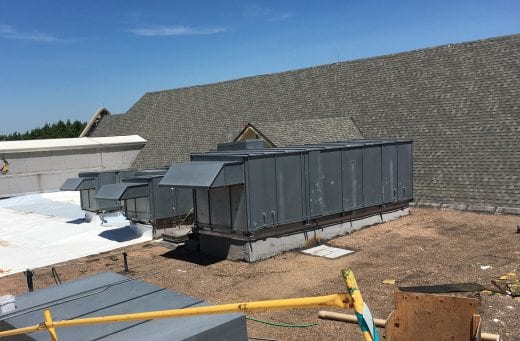
“It’s a challenge we haven’t quite managed to come up with a workable solution for yet,” Mike Haddock, associate dean, said. “There’s been talk of everything from dismantling them and bringing them down in pieces to airlifting them off with a helicopter.”
Stay tuned for those photos, right?
About a month ago, we shared photos of the dehumidification tubes that prompted references to science fiction pop culture.
Well, sci fi fans, meet the hydroxyl generator.
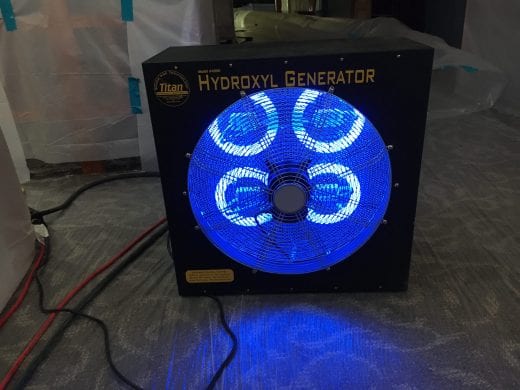
There are multiple boxes emitting an eerie blue glow across fifth floor. These hydroxyl generators use a phenomenon that occurs in nature to neutralize odor left by the fire.
Hydroxyls are molecules that are created when sun’s ultraviolet rays react with water vapor in the air; however, they don’t occur indoors. The generator creates atmospheric hydroxyls that neutralize smells by breaking down the chemical bonds in the odor-causing bacteria molecules. Hydroxyls also neutralize some molecules in mildew and in mold spores. The machines are safe for use in occupied areas.
Thank you for these weekly updates! It is instructive and inspiring. Clearly Hale Library was well prepared for the event of the unexpected and you are provided excellent lessons to others on how to prepare.
Pamela Salela, Association Professor
University of Illlinois at Springfield
Your kind words just made our morning! We will make sure to share them widely.
Don’t miss our profile next week on Kathryn Talbot, K-State Libraries’ preservation coordinator … the things she has seen and problems she has solved are mind boggling!
With appreciation,
Sarah Hoyt